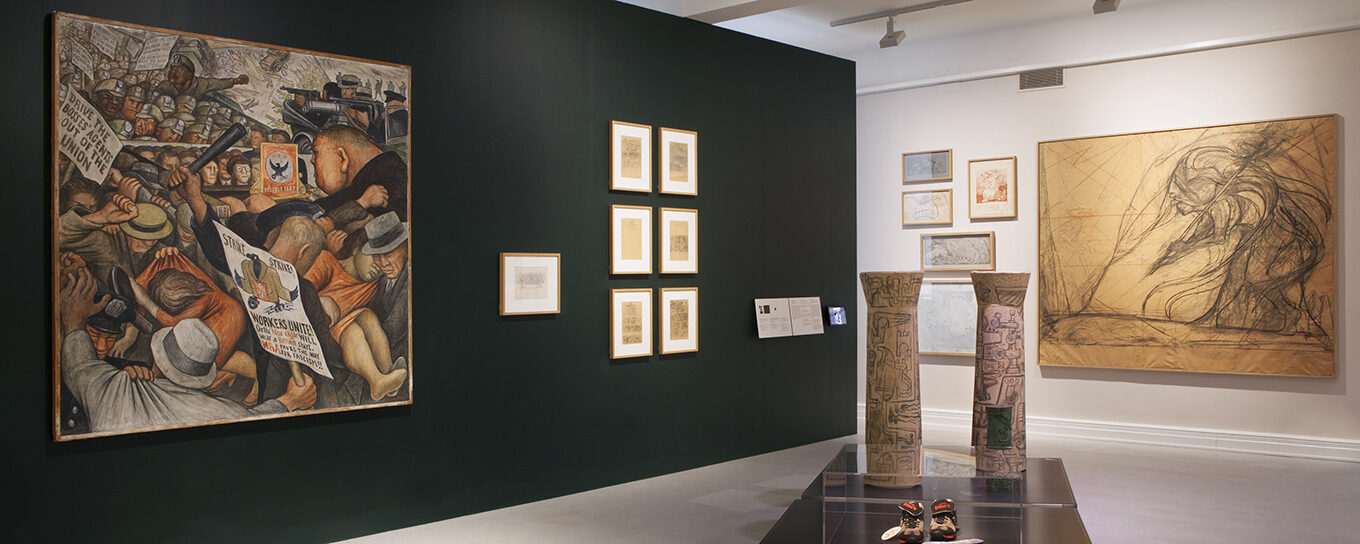- Open today 11–17
- Open today 11–17
The Mexican Collection
In the 1960s, Skissernas Museum began collecting sketches for Mexican art in order to better tell the history of mural painting during the 20th century. Today, the museum has one of Europe’s foremost collections of sketches by Mexican monumental painters such as Diego Rivera and David Alfaro Siqueiros.
After the Mexican Revolution during the 1910s, the state commissioned murals andmosaics for public spaces and buildings from artists. The country’s new leaders wanted to define the identity of the modern nation state of Mexico with political and cultural visions. One of the aims was to make visible pre-colonial cultural heritage and highlight contemporary indigenous popular traditions. As mural paintings could be traced back to the period before the Spanish conquest in the 1500s, the choice of this art form contributed to emphasising the aboriginal and the national.
The themes represented often combined elements from the culture of indigenous populations and imagery from pre-Columbian mythology with historical images of the country’s fight for independence from Spanish colonial power, the revolution and the emergence of a modern society with its science and technology. The association of the pre-Columbian aesthetic with a modern expression summarised the image of the new nation. Many of the murals are narrative and figurative and were often developed in close contact with the architecture. They were meant to be accessible to all and the purpose was one of both popular education and propaganda.

